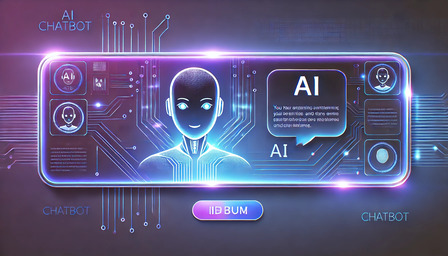
 AI chatbots have become a common part of daily interactions, whether in customer service, personal assistants, or even mental health support. Their ability to process language and respond instantly makes them efficient, but can they genuinely understand human emotions? This question sparks debates among researchers, developers, and users alike. While AI chatbots can mimic empathy through pre-programmed responses, their actual grasp of human emotions is far more complex.
AI chatbots have become a common part of daily interactions, whether in customer service, personal assistants, or even mental health support. Their ability to process language and respond instantly makes them efficient, but can they genuinely understand human emotions? This question sparks debates among researchers, developers, and users alike. While AI chatbots can mimic empathy through pre-programmed responses, their actual grasp of human emotions is far more complex.
How AI Chatbots Detect Emotions
Initially, chatbots were designed to process simple text commands without any emotional intelligence. Over time, advancements in natural language processing (NLP) and sentiment analysis allowed them to recognize patterns in text and respond accordingly.
- Sentiment Analysis
AI models analyze words, phrases, and punctuation to determine the sentiment behind a message. If a user types, “I had a terrible day,” the chatbot can detect negative emotions and reply with something supportive. However, this analysis is based on patterns rather than genuine emotional awareness. - Tone and Context Recognition
Some advanced chatbots can assess tone through capital letters, emojis, and repeated words. For instance, “I’M SO EXCITED!!!” is often interpreted as enthusiasm, while “I guess that’s fine” might suggest disappointment. Even though AI can pick up these cues, it still lacks personal experiences that shape human emotions. - Facial and Voice Recognition
AI models integrated with voice assistants or video-based applications attempt to interpret emotions through tone modulation and facial expressions. In comparison to text-based chatbots, these systems provide more accuracy, but they are still limited by their inability to experience emotions themselves.
The Difference Between Simulated and Real Emotions
Although AI chatbots can replicate human-like responses, their emotional intelligence remains artificial. Unlike humans, chatbots do not experience feelings, memories, or personal biases that influence emotional reactions.
Pre-Programmed Empathy
Some chatbots are programmed with empathetic responses, such as, “I’m sorry to hear that” or “That must be difficult for you.” These phrases create the illusion of emotional understanding, but they are chosen based on data rather than genuine concern.
Lack of Personal Experience
Emotions in humans stem from life experiences, relationships, and personal struggles. In the same way, people react based on past events, while AI follows algorithms that predict the most appropriate response. This fundamental gap prevents chatbots from fully replicating human emotions.
Ethical Considerations
Some users may feel comforted by AI-driven conversations, particularly in mental health applications. However, there is a concern that users may mistake chatbot-generated responses for genuine human empathy. Consequently, this raises questions about whether AI should be used in emotionally sensitive situations.
Can AI Chatbots Adapt to Emotional Complexity?
AI models are improving in their ability to recognize emotions, but they still struggle with deeper emotional complexities. Human emotions often involve sarcasm, irony, or hidden meanings, which AI finds challenging to interpret.
- Sarcasm and Humor
Even though AI can detect some forms of sarcasm based on common phrases, it often fails when the context is ambiguous. For example, “Great, another meeting” could be genuine or sarcastic depending on the situation. While humans understand this through tone and context, AI may misinterpret it. - Cultural Differences in Emotions
Emotional expressions vary across cultures. A phrase that indicates sadness in one language might not translate the same way in another. Similarly, humor differs significantly between cultures, making it difficult for AI to respond appropriately to diverse audiences. - Contextual Nuances
Human emotions are influenced by multiple factors, including past interactions and environmental context. AI chatbots lack memory beyond programmed limits, meaning they do not form emotional continuity in conversations. As a result, their responses may feel disconnected or impersonal over time.
Where AI Chatbots Are Most Effective
Despite their limitations, AI chatbots serve valuable purposes in various industries. Their ability to analyze large amounts of data quickly makes them useful in specific emotional interactions.
Mental Health Support
Chatbots designed for mental health can provide users with coping strategies, breathing exercises, or helpful articles. While they do not replace human therapists, they offer immediate support when needed.
Customer Service
Many businesses integrate chatbots to handle customer complaints and inquiries. They can identify frustration or dissatisfaction in messages and redirect users to a human agent if necessary.
Education and Learning Support
Chatbots assist students by answering questions and providing learning resources. Even though they do not form emotional connections, they can recognize when students express confusion and adjust explanations accordingly.
The Role of AI Tools in Emotional Intelligence
AI-driven systems continue to evolve, incorporating advanced features that improve emotional recognition. Some platforms integrate machine learning with user interactions to refine chatbot responses over time. AI Tools assist developers in training chatbots to detect emotions more accurately, improving their ability to respond appropriately in different contexts.
The Future of Emotional AI
Eventually, AI may develop better ways to interpret emotions, but it will still be fundamentally different from human emotional intelligence. Some researchers suggest that integrating AI with real-time behavioral analysis could improve accuracy in detecting emotions. However, ethical concerns regarding privacy and data usage remain unresolved.
Challenges in Emotional AI Development
- Privacy and Consent – AI models require vast amounts of personal data to improve emotional detection. Users must be informed about how their data is collected and used.
- Bias in AI Models – Chatbots trained on biased datasets may misinterpret emotions, leading to inaccurate responses.
- Human Dependency on AI – Over-reliance on chatbots for emotional support could impact real-life human interactions.
Conclusion
AI chatbots have made impressive progress in recognizing and responding to human emotions, but they do not truly feel emotions themselves. Their ability to simulate empathy and adjust responses based on sentiment analysis creates the illusion of emotional intelligence. However, their limitations become evident in complex emotional situations, such as sarcasm, humor, and cultural differences. While AI continues to evolve, it is unlikely to fully replicate human emotional depth anytime soon.





Leave a Reply